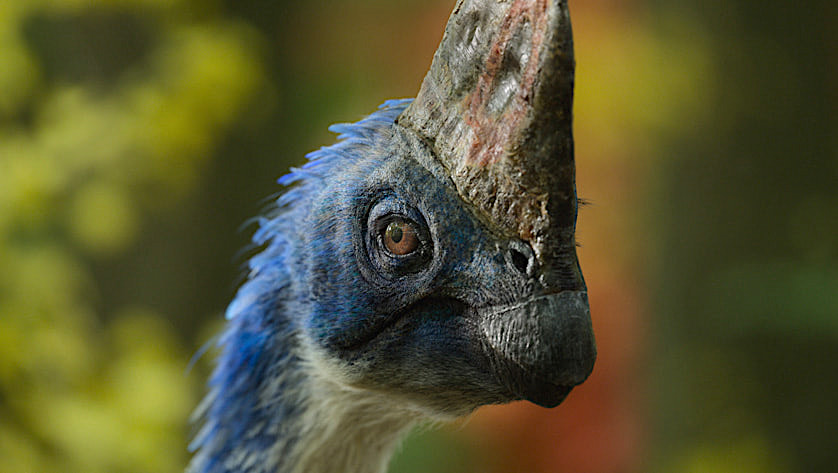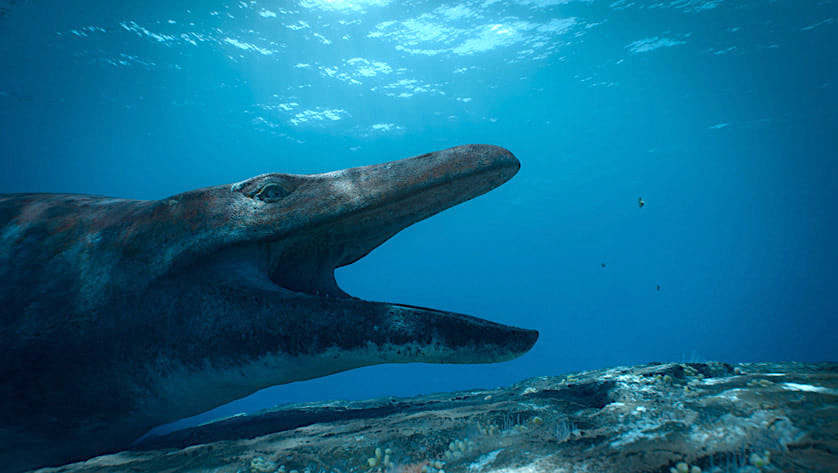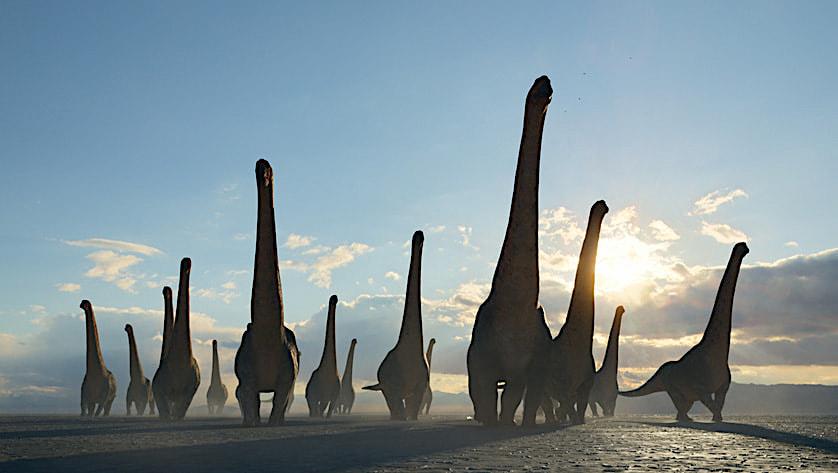With Jurassic World: Dominion due in June, which will mark the end of the “Jurassic” movie franchise, here’s Apple TV’s alternative, science-based history of dinosaurs and their world. It’s produced by Jon Favreau, a key player in the Marvel Cinematic Universe, and narrated by David Attenborough in his trademark “Whispering Dave” style. Attenborough likens it to his Planet Earth documentaries, except transported 66 million years into the past.
Prehistoric Planet claims that it has incorporated all the latest research into the lives of the creatures that used to rule the earth, though much of the dino-action depicted must surely be at best speculative.
Did the Titanosaurus, for instance, really woo potential mates by inflating weird-looking air sacs on its very long neck (these creatures were 85 feet tall, apparently)? Or did the Triceratops eat “a special clay” found in underground caves to counteract the effects of eating toxic plants? And how do the boffins know that the Carnotaurus used to clear a space in the South American forests in which to perform his mating dance, in which he flapped two preposterously tiny arms in the hope of igniting the ardour of a female? (pictured below, Corythoraptor).
 But never mind all that, because the chief selling point of Prehistoric Planet is its spectacular array of extraordinarily detailed computer-generated dinosaurs, which move in perfectly-rendered fluid motion through real landscapes of coastline, deserts, forests or polar ice-caps. Just occasionally you can tell you’re watching an animation, but eyes, feathers and scaly reptilian skin are delivered in microscopic detail, and the technology has advanced to the stage where it’s capable of depicting any number of independently-moving animals within a single frame with perfect smoothness.
But never mind all that, because the chief selling point of Prehistoric Planet is its spectacular array of extraordinarily detailed computer-generated dinosaurs, which move in perfectly-rendered fluid motion through real landscapes of coastline, deserts, forests or polar ice-caps. Just occasionally you can tell you’re watching an animation, but eyes, feathers and scaly reptilian skin are delivered in microscopic detail, and the technology has advanced to the stage where it’s capable of depicting any number of independently-moving animals within a single frame with perfect smoothness.
For instance, we see herds of duck-billed Hadrosaurs trying to cross freezing-cold rivers with their offspring in tow, while being harassed by Dromosaurs (small feathered carnivores) who are trying to panic their prey and separate the parents from their vulnerable young. There’s an especially complex sequence where Velociraptors (which were very agile but couldn’t fly) scramble down a sheer mountainside to ambush the Pterosaurs (think Pterodactyl) nesting on cliff ledges below, trying to grab them before they leap into space and fly away.
 All of prehistoric life is here, from the vast underwater reptile called a Mosasoaurus (pictured right) to the Mononykus, a “desert specialist” that looks a bit like a Roadrunner with the head of an anteater. The furry and rather endearing-looking Mononykus could be the meerkat of the piece, though you’d have to watch out for its outsized claws, handy for ripping open termites’ nests.
All of prehistoric life is here, from the vast underwater reptile called a Mosasoaurus (pictured right) to the Mononykus, a “desert specialist” that looks a bit like a Roadrunner with the head of an anteater. The furry and rather endearing-looking Mononykus could be the meerkat of the piece, though you’d have to watch out for its outsized claws, handy for ripping open termites’ nests.
Graphics aside, the storylines of the five episodes are fairly rudimentary, and there’s a tendency to anthropomorphise the creatures with, for instance, heartrending scenes of lost baby dinos crying for their mothers. The score by Hans Zimmer and Andrew Christie gives the viewer fairly unsubtle nudges about the reaction the narrative wants to provoke, from playful skittishness to solemn ponderousness. But for family viewing with a bit of added educational value, this is liable to be a big hit.















Add comment